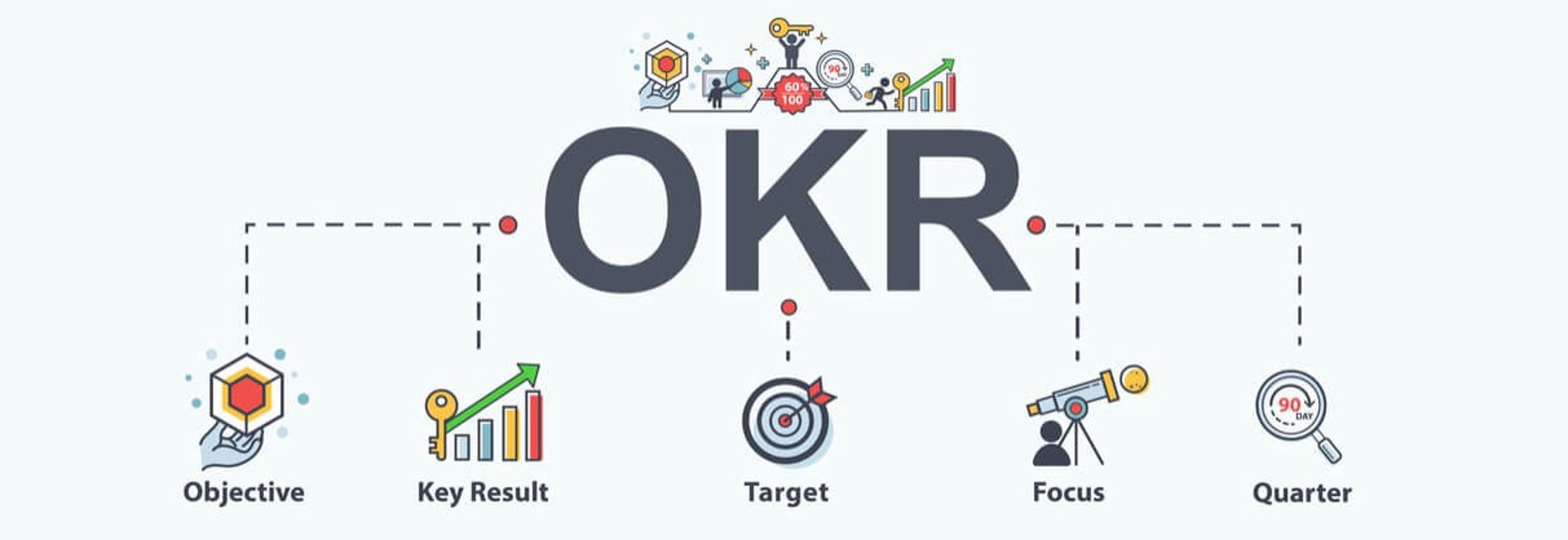Are your 'Key Results' undermining your 'Objectives'?

Published 2023-03-21
Summary - Here are five simple pointers to avoid surrogation.
An obsession with the numbers can sink your strategy
Over the years we have seen many things derail great strategies, but perhaps the most unexpected is “surrogation”. Surrogation is when an organization uses the metric as a surrogate for their strategic objective. In other words, the organization begins chasing the metric, not the objective.
“In OKR terms, surrogation is confusing the 'KR' with the ‘O’”
We see surrogation in at least 70% of the failed OKR solutions that we have reviewed. Why is this? Because Objectives (Os) can be abstract, employees often mentally replace the Objective with the Key Results (KRs). The KRs are intended to assess whether the organization is succeeding at their strategy, but they are not the strategy.
I’m sure you’ve seen surrogation. The most common example we see if when an organization has a strategy like, “Be our customer’s trusted advisor” with a KR like, “$ Sales per Customer”, with the idea that customers would spend more with us if we were their trusted advisor. But, at the end of every quarter, the Sales Rep’s focus is on getting the highest “$ Sales per Customer”, even if it sacrifices the trusted advisor status.
The good news is that it is preventable with good OKR design, and a recoverable error if you did not avoid surrogation in your initial launch - so long as you catch it early enough.

What does the research tell us?
In 2010 Jongwoon Choi, Gary Hecht and Gary and William Tayler wrote an article called Lost in Translation: The Effects of Incentive Compensation on Strategy Surrogation.
In which they introduced the “surrogation” term around compensation issue. Their work determined that to facilitate managers’ decision-making, firms develop strategic performance measurement systems that translate strategy into performance measures.
Ideally, managers see measures for what they are: imperfect proxies for intangible strategic constructs. However, managers may fail to fully appreciate the fact that measures are merely representations of the strategic constructs, and act as though the measures were the construct of interest – a phenomenon they labelled as “surrogation”.
They looked at how the use of strategically linked performance measures for compensation purposes affects managers’ propensity to exhibit surrogation. In the end, they highlighted the tendency of managers to use measures as surrogates for strategy and that surrogation can be detrimental to the implementation of strategy.
This research was the extension of several earlier articles that examined the psychology behind this thinking.
So what’s the cure for surrogation?
Here are five simple pointers to avoid surrogation:
1. Create Objectives with concrete outcomes
Objectives should be stated as outcomes, not outputs. In Call Centers, we often see an objective like "Reduce Customer Support talk time” with a KR target of 4.5 minutes. That is an output, not an outcome. The outcome you are looking for is to get your customer past the problem they called in about, returning them to a fully productive state. Phrased as an outcome, the objective could be "Quickly get our customers back to full productivity".
Think of outputs as something you do, whereas outcomes are the consequence of what you did.
The trick to convert an output Objective into and outcome is when you see an “output” Objective, ask yourself “Why?” enough times that you surface the right outcome for that level of the organization.
Creating outcome-based Objectives does a few great things for your organization at once:
- Outcome Objectives reduce the likelihood of surrogation by removing the focus on the number, and
- Outcome OKRs create the space for creativity on the part of your team. For example, there are many more ways to “get our customers back to full productivity" than faster call-closure rates. on-line help, chat-boxes, user-groups, better help screens, etc.
2. Use precise OKRs

Your KRs need to precisely point to the desired outcome, not things that are directionally correct, but miss the target!
“Whoever said ‘be careful what you ask for, you might just get it’ was talking about KRs”
Consider “What would happen if we saw surrogation with this (combination of) KR(s)?”. If attaining these KRs would not necessarily mean the attainment of the Objective, then maybe they are the wrong KRs.
In most cases awesome KRs are available somewhere in the organization – but they have not necessarily been used in the past. They are hidden, like little treasures, across a zillion transaction systems and spreadsheets. The trick here is to start off with the best KRs you can find, but you can expect a rapid improvement of your KRs over the first two or three quarters they are in use.
As a wider cross section of your organization gets exposed to OKRs, they will highlight to you better KRs that they have been collecting. Just swap out your lower “signal strength” KRs with these better ones.
3. Prioritize your KRs
Achieving some KRs will have a higher impact on strategic success than others. It is important that leadership shares their thinking about what is more important than what else.
Let’s take the example of a strategy around launching a new product to cross the chasm (think of the iPad for Apple). We are trying to launch a new product into a new market segment. So, in this case we might have picked three KRs for the Sales Team – “Number of New-Market Sales Calls", "New Product Sales $", and "Sales Closing Ratio".
Without priority setting, or effectively making all KRs of equal importance, the Sales Team might surrogate “Sales Closing Ratio” as it is the fastest and easiest to impact and most familiar to the Sales Team.
Based on the typical sales pipeline, leadership knows that step 1 is call on the new (prospective) customers, step 2, work on selling the new product, and finally, step 3, improve your sales closing ratio.
Based on this logic, in the first quarter (Q1) leadership might set the weighting 80% “Number of New-Market Sales Calls", and 10% each for "New Product Sales $" and "Sales Closing Ratio". This would encourage focus on “Number of New-Market Sales Calls".
Q2 might see leadership updating the weighting to 10% “Number of New-Market Sales Calls", 80% each for "New Product Sales $" and 10% for "Sales Closing Ratio". This would encourage a shift in focus from “Number of New-Market Sales Calls" over to "New Product Sales $".
And Q3 might see leadership shifting the focus again – this time to 10% for both “Number of New-Market Sales Calls", and "New Product Sales $" and an 80% for "Sales Closing Ratio". This would encourage a shift in focus over to "Sales Closing Ratio".
Weighting avoids surrogation by keeping the focus on the right activities at the right time.
4. Focus on the Objectives, not the Key Results
You will also need to shift the organization’s thinking to take ownership of the Objectives, not the KRs. How do you do that? Here are a few ideas:
- Have wide involvement in creating the strategy,
- Have the Department owners and thought-leaders do the work of translating the corporate Objectives and targets into their department’s OKRs. Have the Process Owners do the work of translating the Department OKRs into their OKRs. Have the Teams do the work of translating the Process OKRs into their OKRs. In this way, everyone connects with their own cascaded objectives.
- Make sure you swap out weaker KRs with more precise ones, as soon as possible,
- Remember the KRs merely answer the question “As measured by?” and are not the objective, and finally
- Make sure all performance conversations touch on the Objective(s) – either before going into the KRs, or after the detailed KR conversation.
5. Loosen the link between OKRs and rewards
Notice I say "loosen", not "remove". It is crazy to set OKRs based on what people should be doing, and not including those OKRs in your performance and reward conversations. The trick is to make them only a component of those conversations. I have written about the "Six Types of KRs " (Valuation, Navigation, Compensation, Calibration, Communication and Regulation). OKRs are a "navigational" tool - they help you navigate the business (do we turn left or right?). These KRs tend to be leading indicators.
Compensation metrics tend to be lagging (and therefore not useful as KRs), must be auditable (as people need to know they are rewarded based on 'hard' numbers), and have to fit the S.M.A.R.T. framework (which goes against the whole 'aspirational' or ‘stretch goal’ idea).
In conclusion
Surrogation is just one of the top five reasons that OKR solutions fail. They are important to keep top of mind, as many people do not see this problem occurring until it is too late.
The happy ending for you is this: so far, we have always been able to help organizations recover from surrogation. It just takes careful coaching, a few simple techniques, and a little bit of on-site support.
Wishing you the best OKR journey possible,
Brett





